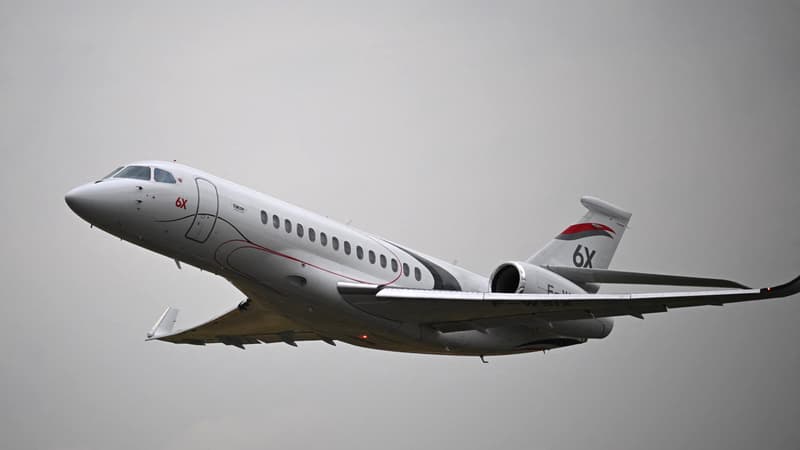Good for the service. Now double certified by the aviation safety agency and across the Atlantic by the FAA, the American federal aviation agency: after 1,500 flight hours in all situations and in all types of weather, i.e. 2 years of testing , the Falcon 6X can already take off commercially. A great challenge for Dassault Aviation. Because, along with the Rafale, the planes represent an important source of income for the aircraft manufacturer.
A growth engine
According the echoes, airplanes account for between 30 and 50% of Dassault’s turnover, and the arrival of the 6X comes at an opportune time. Order intake for Dassault aircraft fell in the first half, with just 12 Falcon orders compared to nearly 41 in the same period a year earlier. The same is true of the devices delivered, with 9 devices delivered versus 14 in the first half of 2022. Thanks to the certification, Dassault will be able to start deliveries of the Falcon 6X in the coming weeks.
Therefore, this new aircraft represents a true growth engine for Dassault, although for the moment it will not save 2023. “In a difficult context with the supply chain, our objectives for 2023 remain unchanged: we plan to deliver 15 Rafale and 35 Falcon (including Falcon 6X) and lower sales volume than last year,” the aircraft manufacturer stressed in a July 20 press release.
A flight radius of more than 10,000 kilometers
The Falcon 6X should, above all, in the long term, represent a pebble in the place of the other giants in the sector, the American Gulf Stream and the Canadian Bombardier. The main feature of the Falcon 6X is its long range for a twin-engine aircraft. In fact, the device is capable of connecting Sao Paulo with London or Beijing with San Francisco in one go. In fact, its autonomy is 10,200 kilometers with 8 passengers and 3 crew members.
And the business plane requires it, special care has been taken in the cabin. The latter claims to be “the most spacious in its category,” they explain in Dassault, all thanks to a height of 1.98 meters.
Flight controls are fully digital with a full screen cockpit. Dassault also insists that the plane is capable of flying on 50% sustainable fuel. This particularity is intended to be a strong commercial argument, in these times when executive jets are highly criticized for their carbon footprint.
A commercial challenge, the Falcon 6X also represents an industrial challenge for Dassault. The latter has not put a new aircraft into service since 2016 and the launch of the Falcon 8X. Produced in Mérignac, it completes the Falcon range pending the 10X, currently under development. Their list price: $47 million each.
Source: BFM TV


